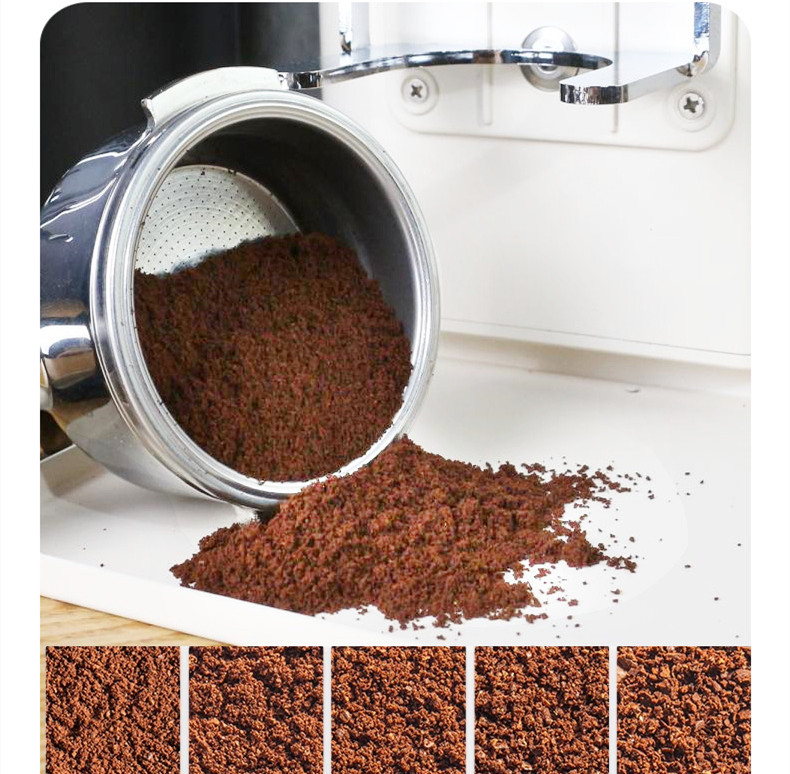The precision requirements for hand-brewed coffee grinders are relatively high, mainly involving aspects such as the distribution of particle size, sieving rate standards, grinding uniformity, and equipment adjustment accuracy. The following is a specific analysis:
The range of particle fineness
The ideal grinding particle size for hand-brewed coffee should be between 0.6 and 0.85mm. Although the coffee grinder cannot guarantee that all coffee powder particles are completely uniform, it should try to keep the fineness of the majority of coffee powder within this range. The remaining small portion of particles exceeding this range has little impact on the overall size.
Sieving rate standard
The grinding degree can be calibrated using a No. 20 sieve (with a hole diameter of 0.85mm). The ideal grinding degree for hand-brewed coffee is that the pass rate of the No. 20 sieve reaches 75% – 80%. The specific operation method is as follows: Use 10 grams of coffee beans, select a grinding scale, grind the coffee powder well and put it into a sieve, shake it horizontally until no more particles fall off, weigh the weight of the fallen powder and divide it by the total amount of powder to obtain the sieving rate. If the sieving rate does not meet the standard, the grinding degree needs to be adjusted and remeasured. However, an 80% screening rate is not an absolute standard; the quality of the coffee grinder also needs to be taken into consideration. If the coffee grinder grinds evenly, this value can be used. If the quality of the coffee grinder is poor, with a large amount of fine powder and a high value of coarse particles, corresponding adjustments need to be made.
Grinding uniformity
The coffee ground produced by a good coffee grinder should be uniform and the proportion of fine powder should be properly controlled. Unevenly ground coffee grinders will waste high-quality coffee beans, resulting in poor coffee taste. For example, the high-nitrogen steel grinding core of Commander C40 has a high grinding efficiency and uniform powder output, far exceeding other hand-cranked bean grinders. The grinding performance of mavo Phantom Stab pro is also excellent; The grinding efficiencies of 1Zpresso, Temo Chestnut Xlite, Chestnut SLIM3, and Hanjiang K6 are relatively close. 1Z is the best, followed by Temo. Overall, the fine powder is not much and the uniformity is relatively high.
Adjustment accuracy
The adjustment accuracy of the hand-cranked bean grinder has an important influence on the grinding accuracy. For instance, the adjustment accuracy of the Temo Chestnut S3 bean grinder reaches 30 microns. It can achieve perfect grinding degrees from French presses to Italian ones. Its double-bearing structure ensures smooth rotation without jamming, making it easy for girls to operate. The MAVO Magic Blade PRO coffee grinder has a adjustment panel of only 0.0167mm per division, with a total of 120 divisions, allowing you to easily control the coffee flavor from Italian to cold brew.
Make a judgment based on the extraction time and taste
Extraction time: Under normal circumstances, the extraction time for hand-brewed coffee should be around 1 minute and 50 seconds to 2 minutes and 10 seconds. If the grinding is too fine, the extraction time will be prolonged. If the grinding is too coarse, the extraction time will be shortened.
Taste judgment: If the coffee has a thin taste, a bland flavor or is sour and astringent, it may be necessary to adjust the grinding degree. If the taste is rich, the flavor is slightly bitter and the flavors are concentrated, it may be necessary to adjust the grinding degree.


